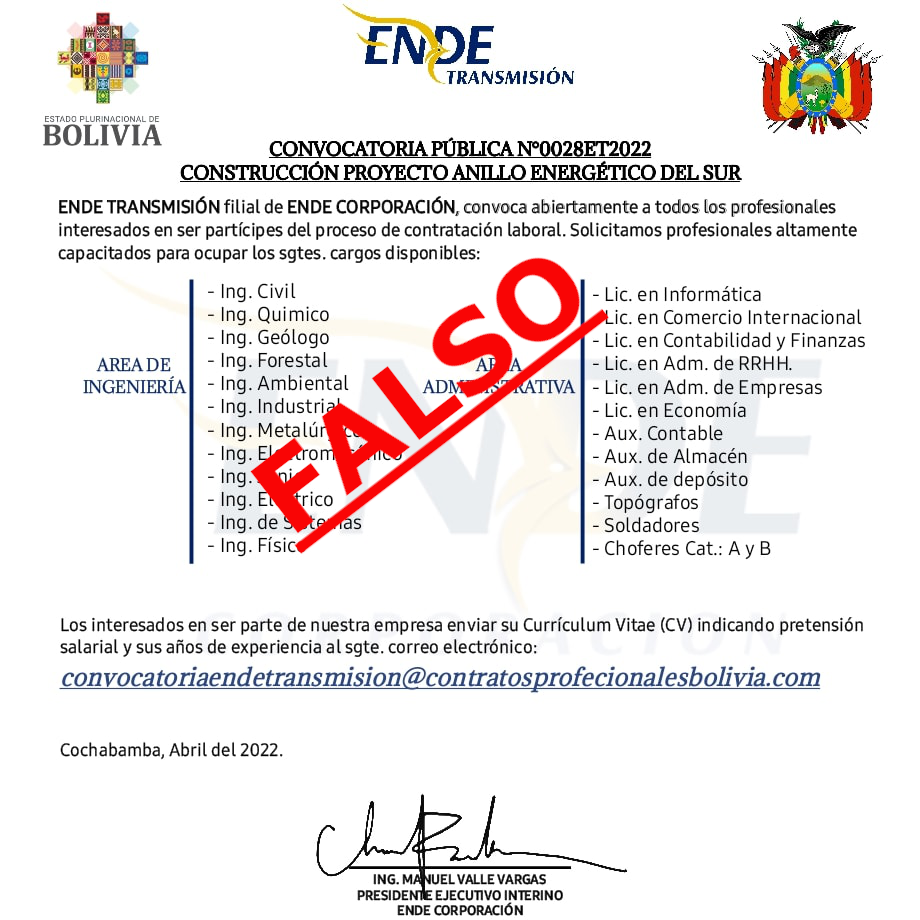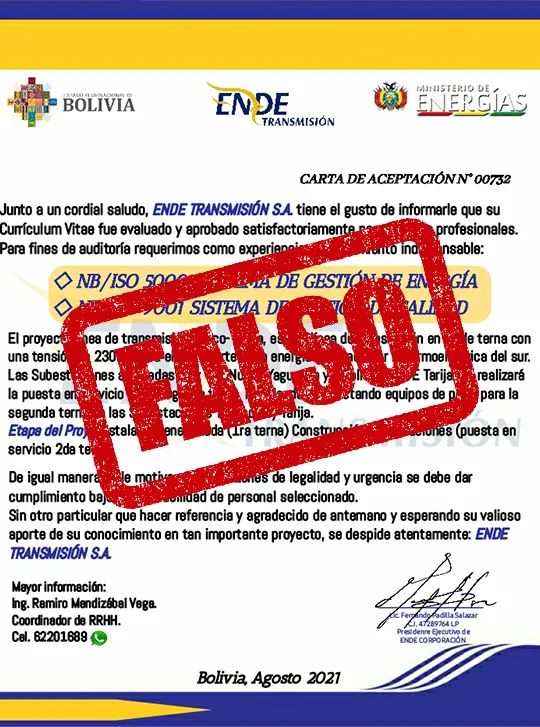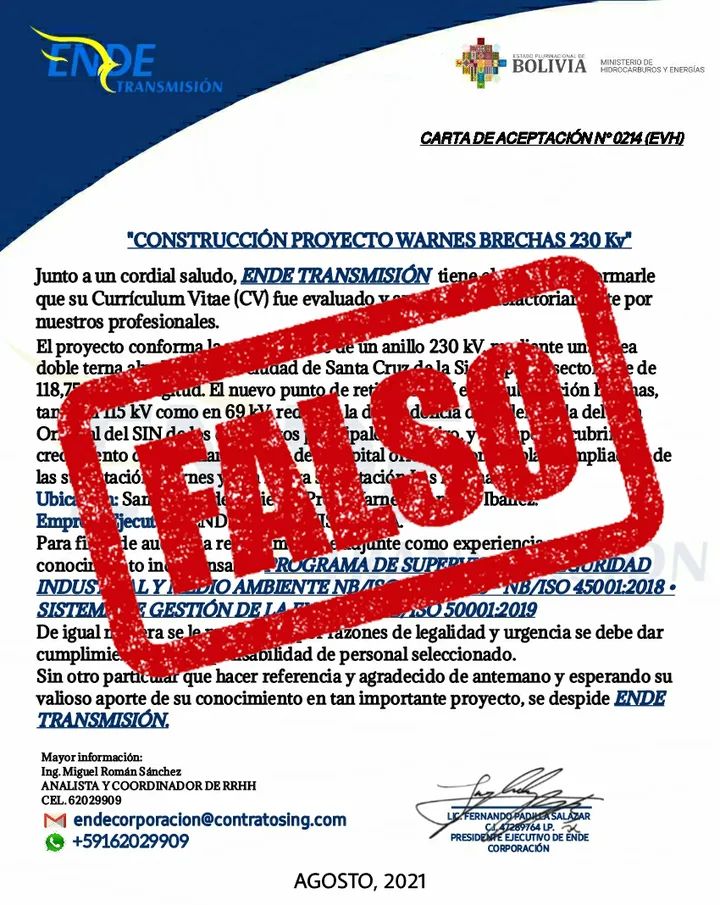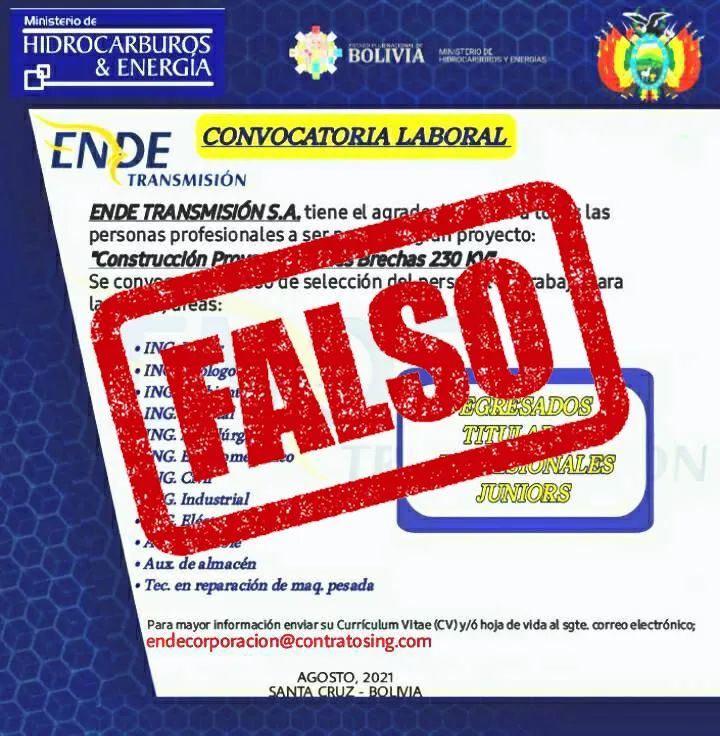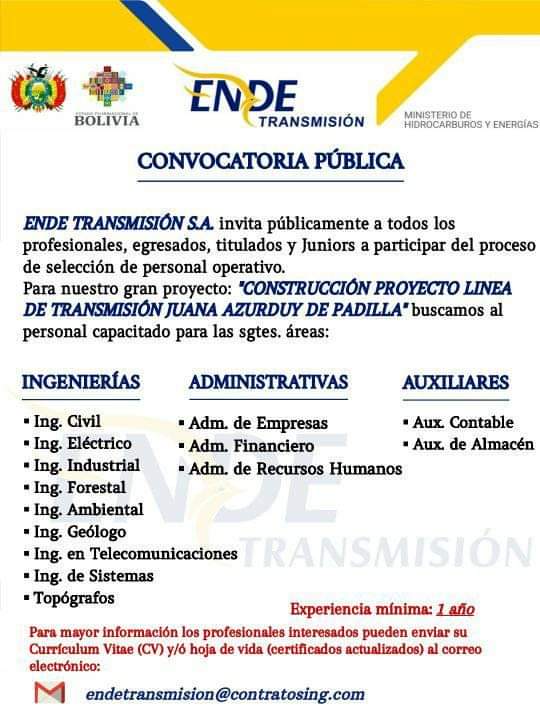-
March 23, 2022
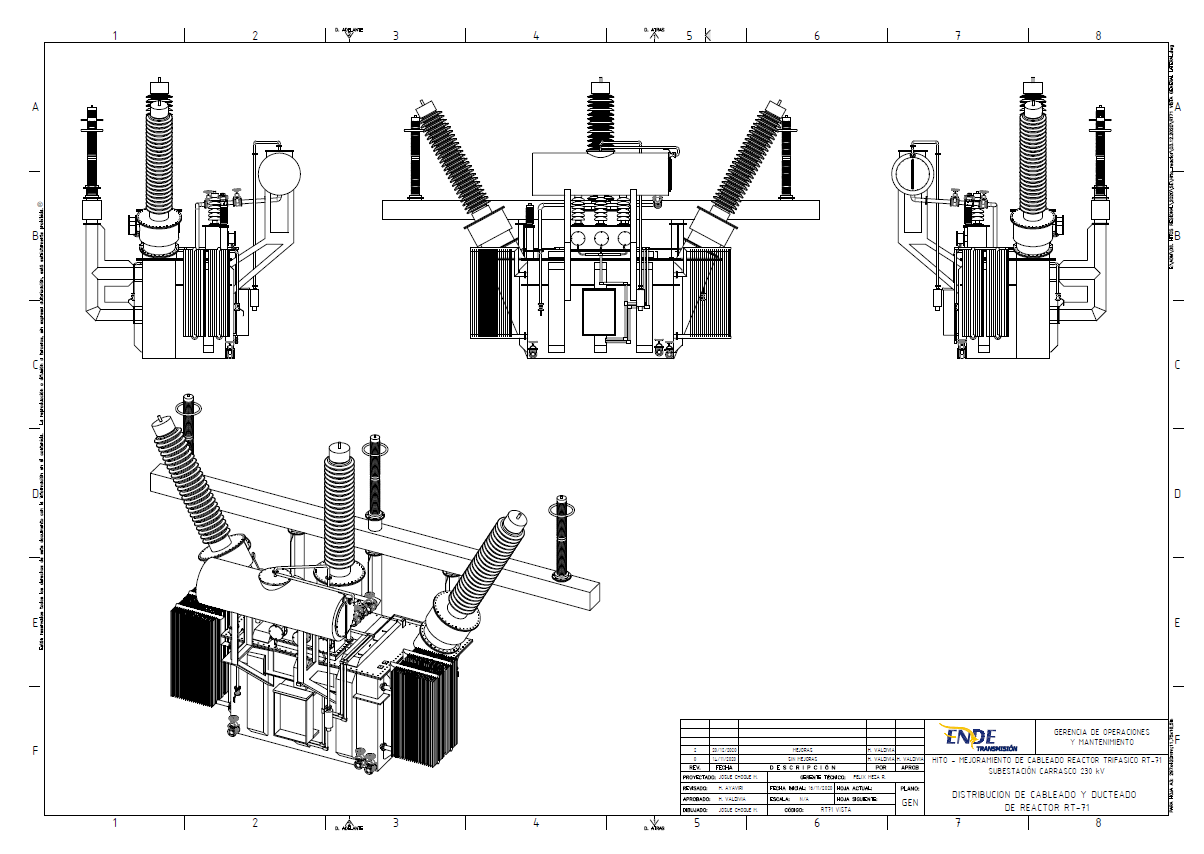
Senior maintenance of the control and protection system in the three-phase reactor 230kv Crompton Greaves in Carrasco Substation
Personnel from the Department of Substation Maintenance and the Regional Tropic of Ende Transmission S.A.Successfully concluded maintenance in the 230kV three-phase reactor Crompton Greaves from the Carrasco substation corresponding to the replacement and improvements of the system of Ducted and renewal of control-protection circuits next to the respective final tests In coordination with the COT.
The technical characteristics of the equipment are the following:
- Equipment: Three-phase power reactor
- Brand : Crompton Greaves
- Power : 12 MVAr
- High voltage : 230 kV
- Frequency : 50 Hz
ENDE Transmisión S.A. It has highly specialized personnel to perform the analysis, re-design and execution of renewal tasks and improvements in transformer components and power reactors installed in Bolivia and as it is natural, the work carried out there Transmission, satisfactorily meet ISO 14001: 2015, ISO 9001: 2015 and ISO certifications 45001: 2018.
The works in the reactor were scheduled based on the analysis of the state of the ducts and Control-protection circuits, which, due to the natural deterioration presented by the years of service and mainly due to the climatic characteristics of the area, it corresponds a Renewal and improvements in these.
The works were executed in four stages:
- Re-design of the ducteed system, quantification and supply of materials.
- Survey of all electrical circuits corresponding to current transformers and Electromechanical Protections (Relay Buchholz, Pressure Relief Valve, Level Indicator of oil, oil thermometers and windings, etc).
- Planning the unavailability of the equipment and execution of the tasks
- Final testing and equipment availability for your re-entry

Development of the re-design of the control and protection circuit control system for the Quantification and detail of materials
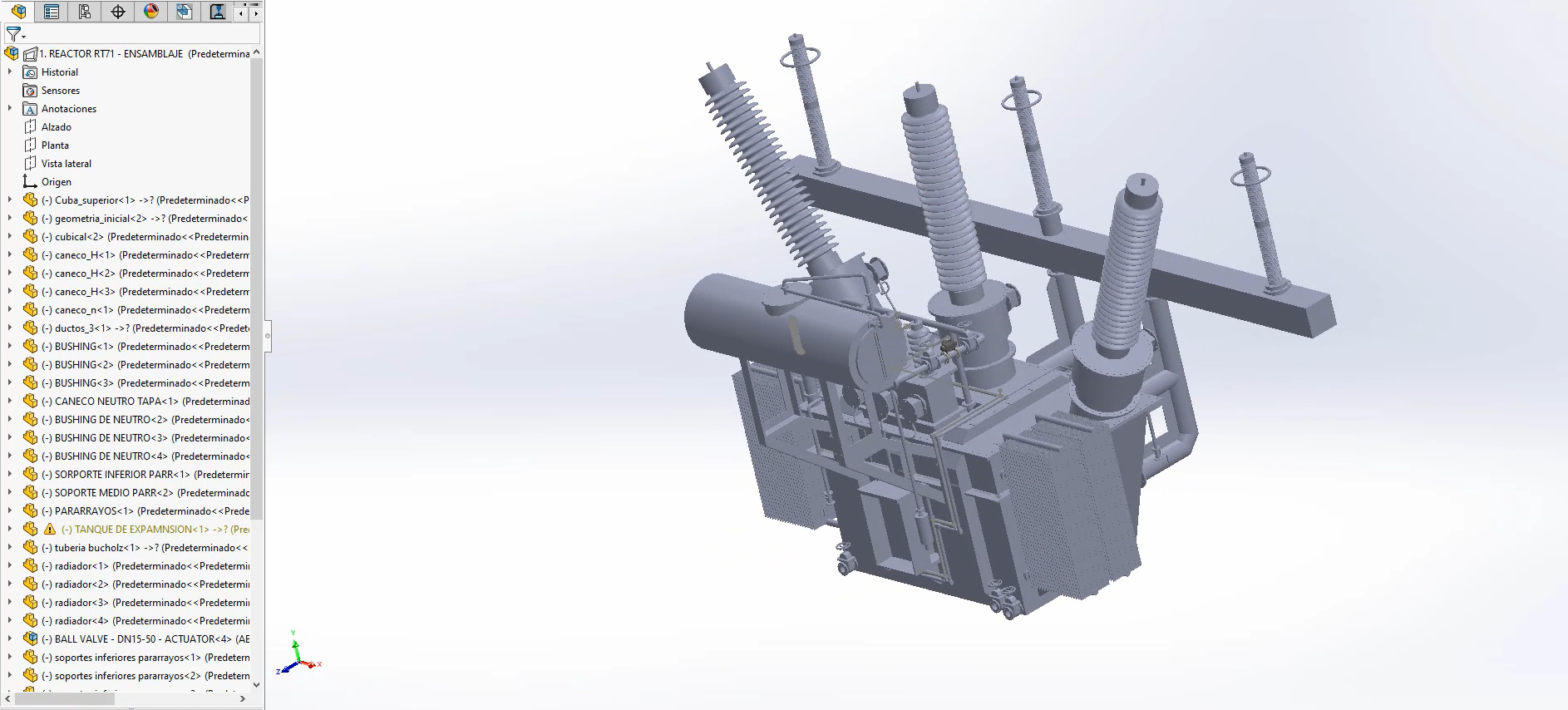
Development of the re-design of the control and protection circuit control system for the Quantification and detail of materials
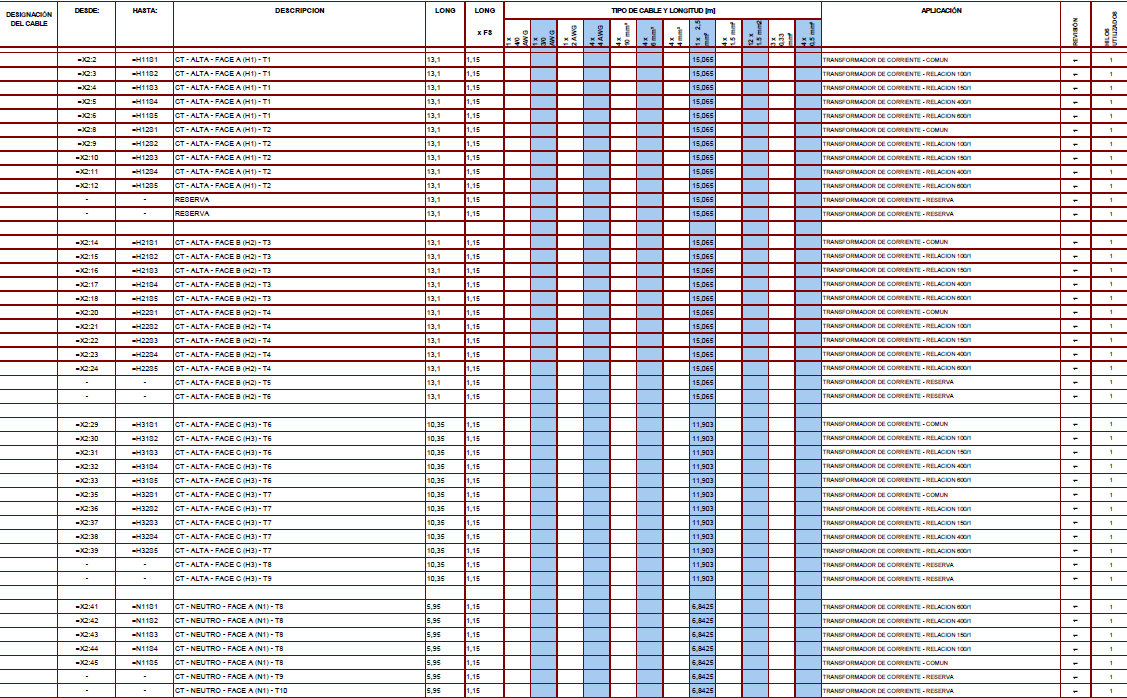
Preparation of wiring sheets
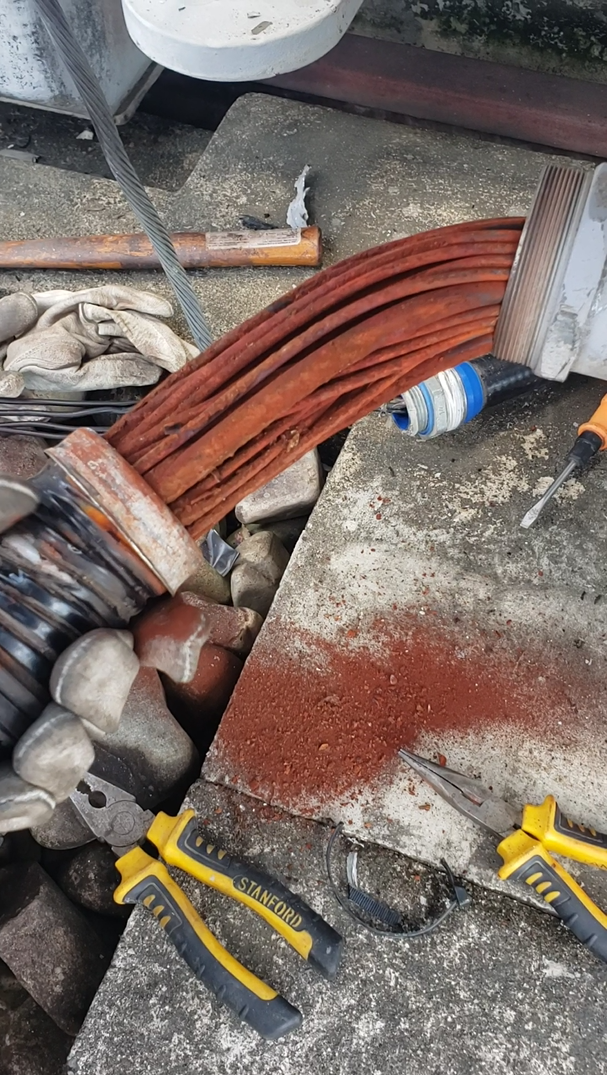
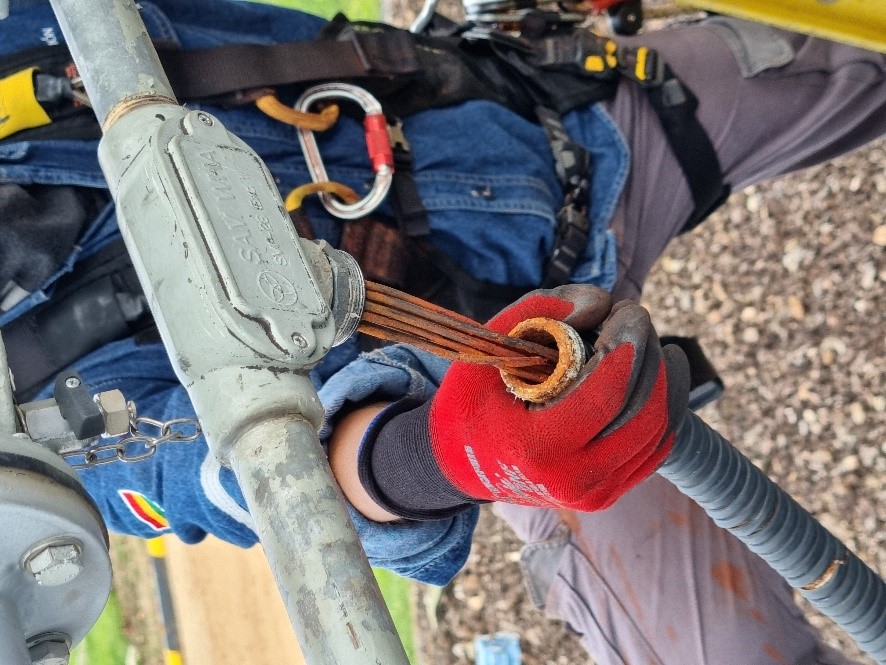 >
>
Disassembly of the ducts and electrical circuits
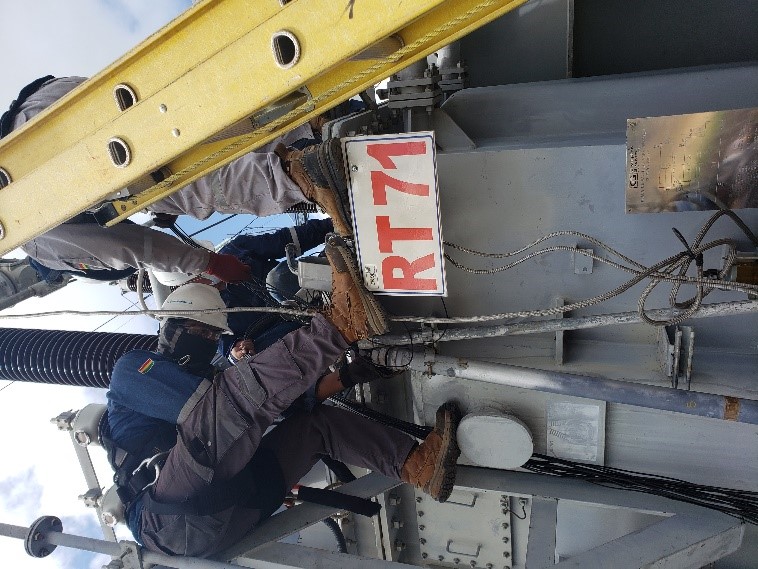
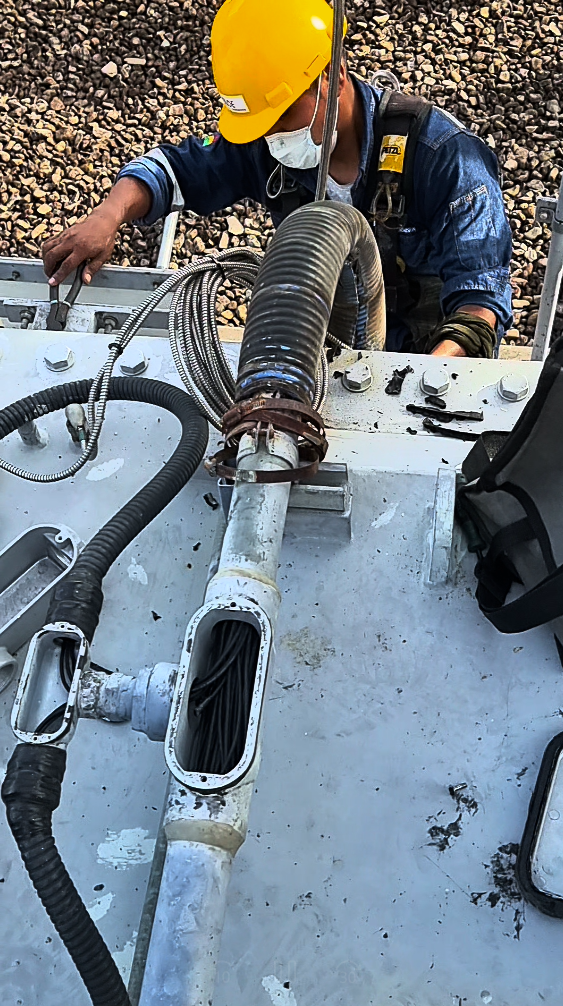 >
>
Disassembly of the ducts and electrical circuits
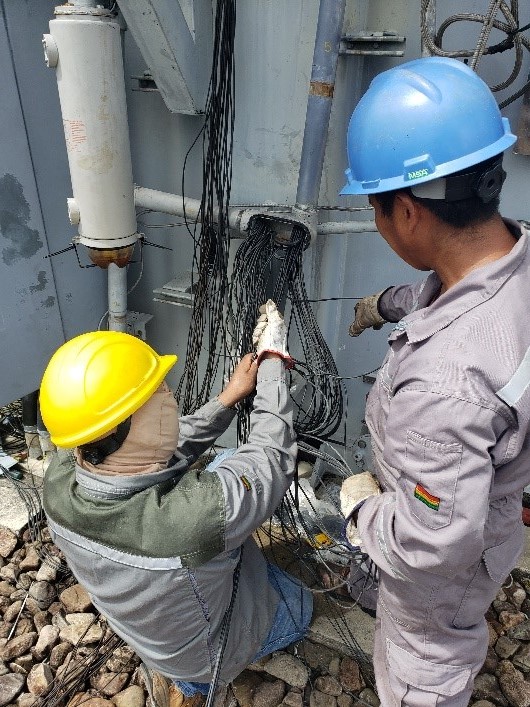
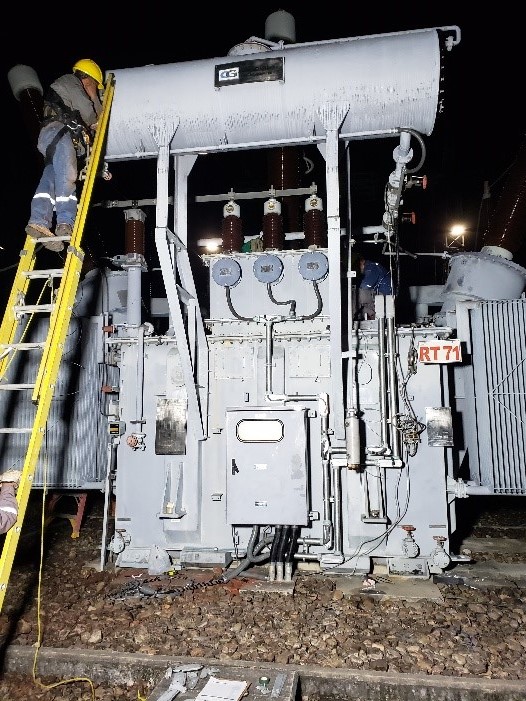 >
>
Installation of new ducts and wiring electrical circuits
For the conclusion of the work, the functional tests of all electromechanical protections were carried out with the confirmation in the control room and COT of activation, the tests and measurements of the current transformers were proceeded to verify the appropriate conditionsof the electrical circuits.
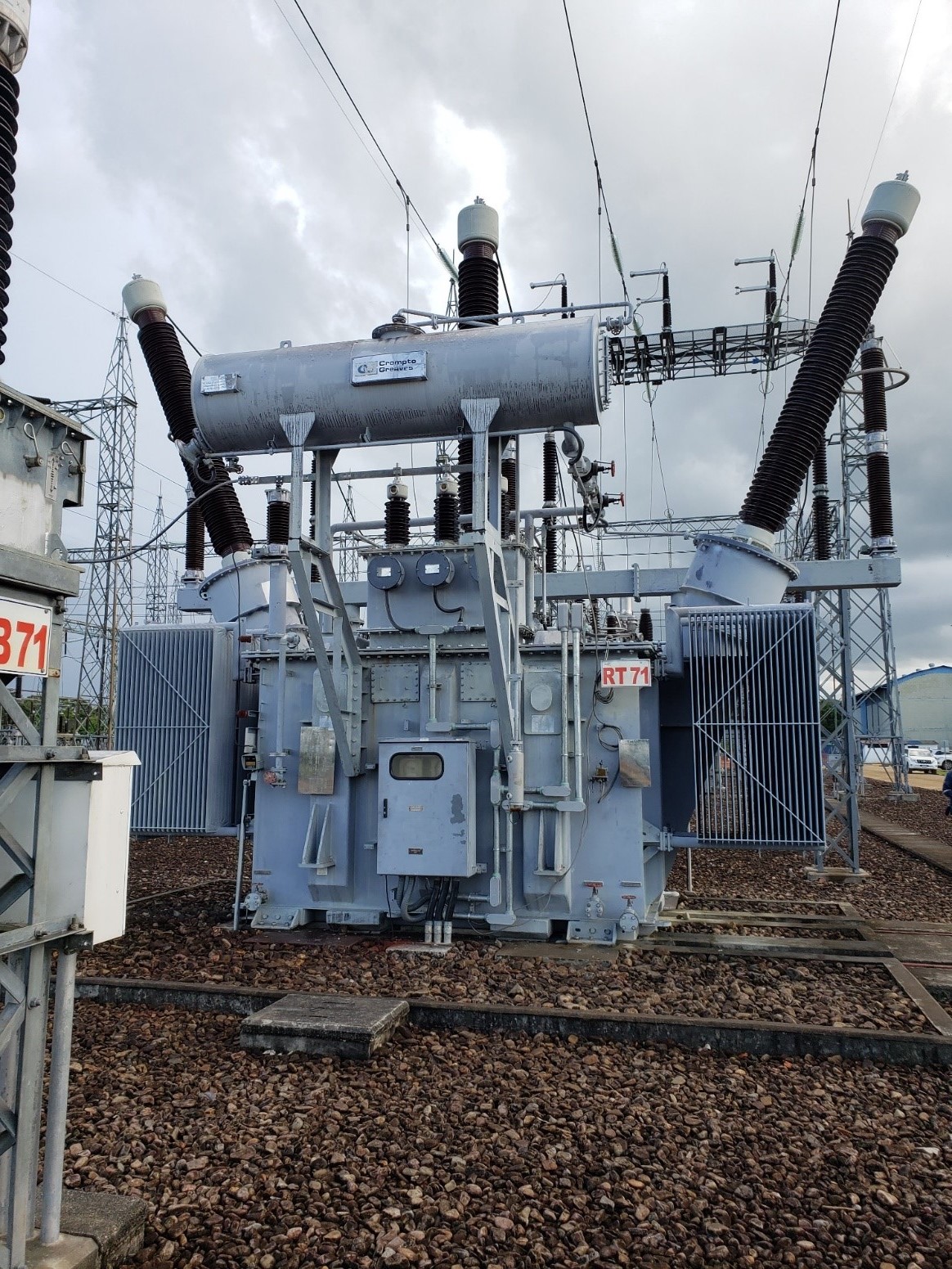
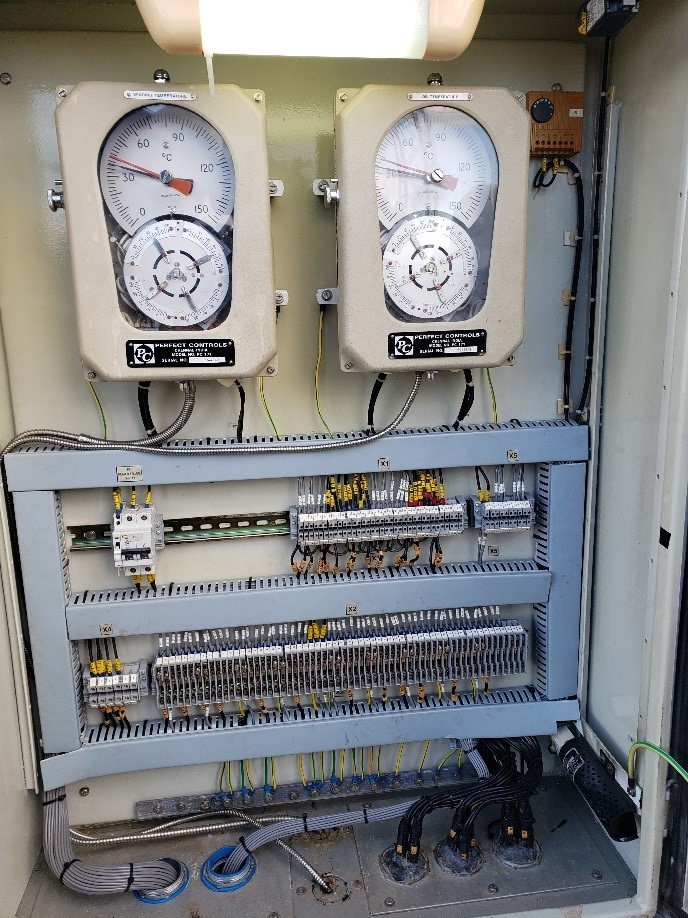
Final State of the reactor Crompton Greaves 12 MVAR of Substation Carrasco.
-
February 5, 2022
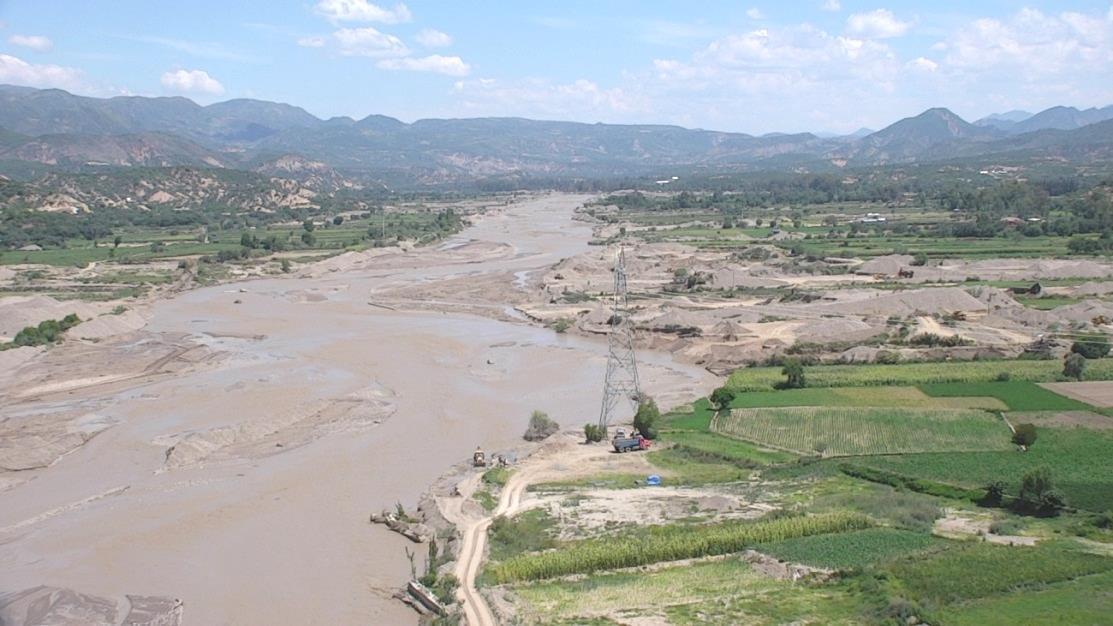
Ende transmisión implements emergency work successfully in Structure 25 line 230 KV Santivañez – PAGADOR
The intense registered storm rainfall, have caused the exceptional increase of Waterflow of the Tapacarí River (confluent from the Rocha River), in the Department of Cochabamba, in the charamoco town near the Capinota population, they provoked untimely erosion and undermine of the river margin, leaving the foundation of the structure 25 of the transmission line 230 kv sanctivañez – payer, in addition to damage to the Way access to the structure.
Maintenance staff of transmission transmission lines of operations and Endere maintenance (GOM) transmission, during periodic inspection tasks, They detected that the Foundation of the Pata D was exposed to the erosive action of the river Rocha, evidenced high-risk situation for imminent collapse of Structure 25 and consequent Output of normal operation of the transmission line 230 kV Sanctivates – payer and possible involvement of electricity supply to the population.

Panoramic view of structure 25 and magnitude of the Rocha River in the area of involvement.
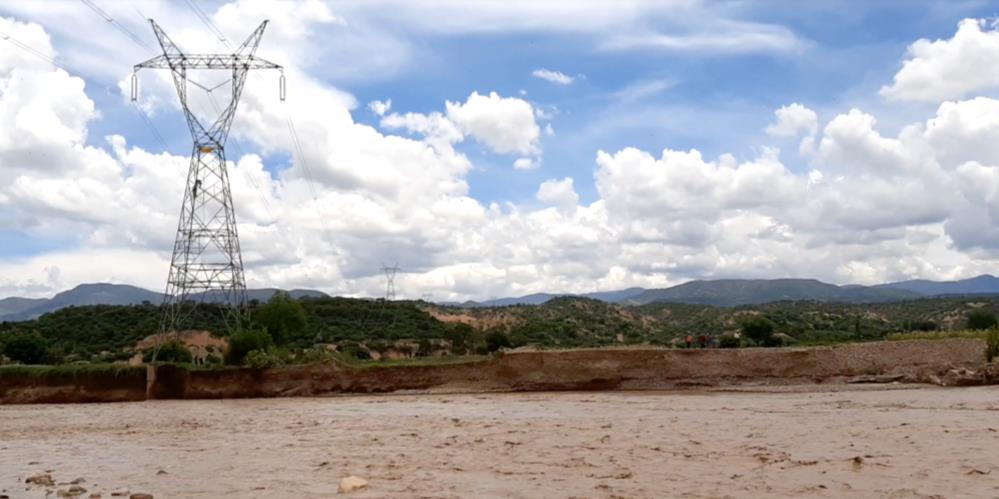
Foundation of the Pata D structure 25 of the transmission line 230 kv sanivañez – payer Exposed to the Erosive Action of the Rocha River.
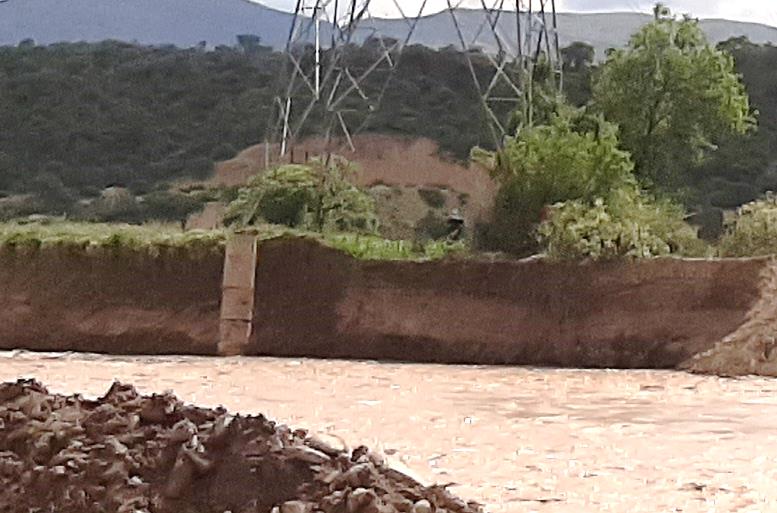
PATA D STRUCTION 25 of the transmission line 230 KV Santivañez – Palazer.
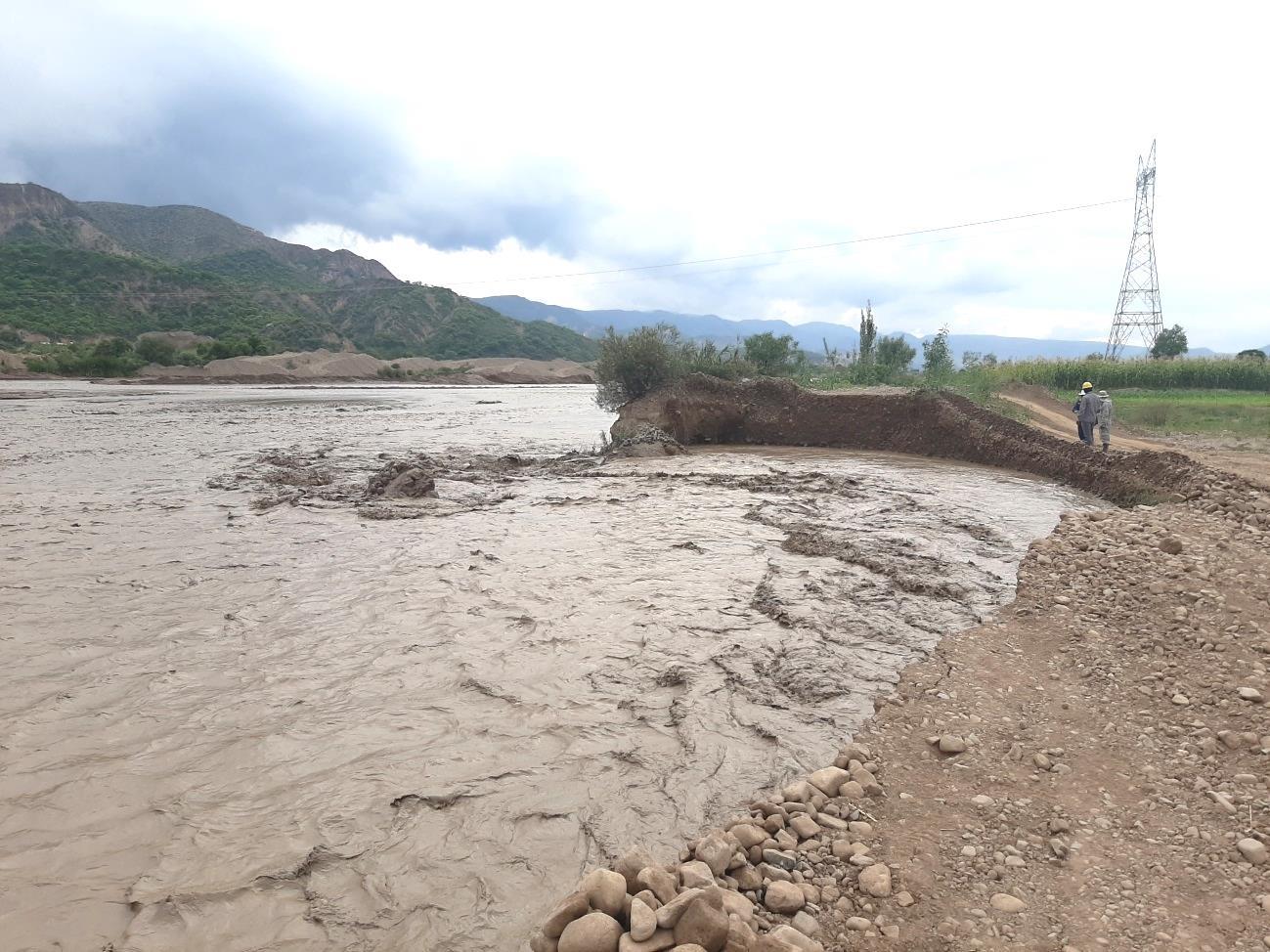
Erosion and Solvation Zone adjacent to the path to structure 25.
Being the mission of Ende Transmission, guarantee the reliability and normal operation of the network of National Electric Transmission, from which the transmission line is part of 230 KV Santáñez – payer, the following emergency work was implemented.
- Dredge of the river to channel the flow, to take away from the current site of the structure.
- Filled with selected material in the critical sectors of Erosion of the Margin of Batten, with The purpose of recovering ground and guaranteeing the stability of the paw D and path of access to the structure.
- Construction of containment structures made up of drawer and mattresses, For the protection of the slope.
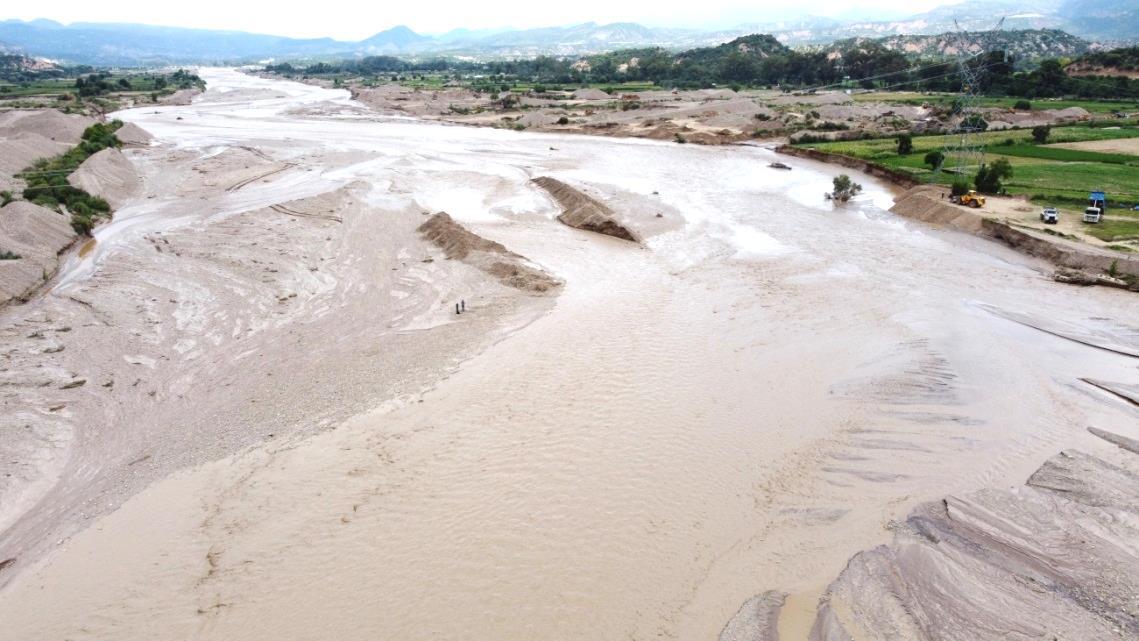
Dredging in the central part of the river.
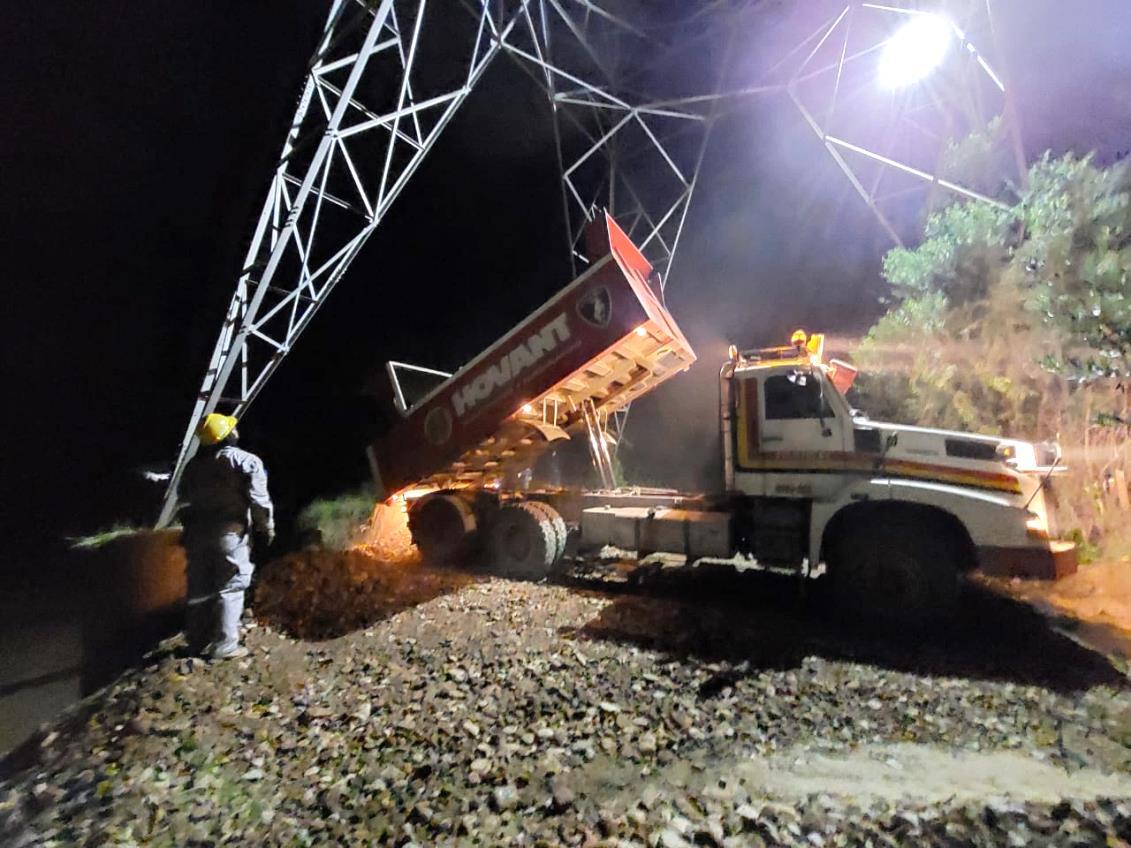
Filling process with selected material on the site of the structure.
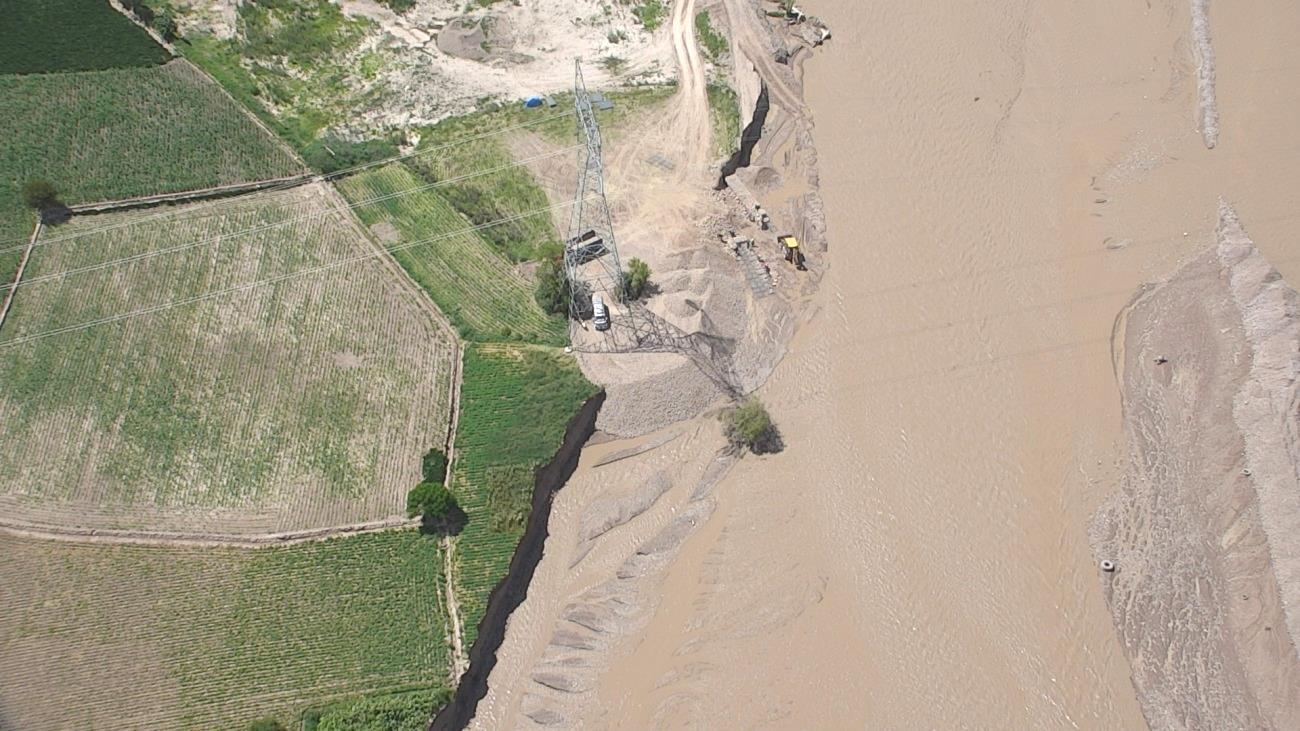
Filling complementation, to recover the terrain.
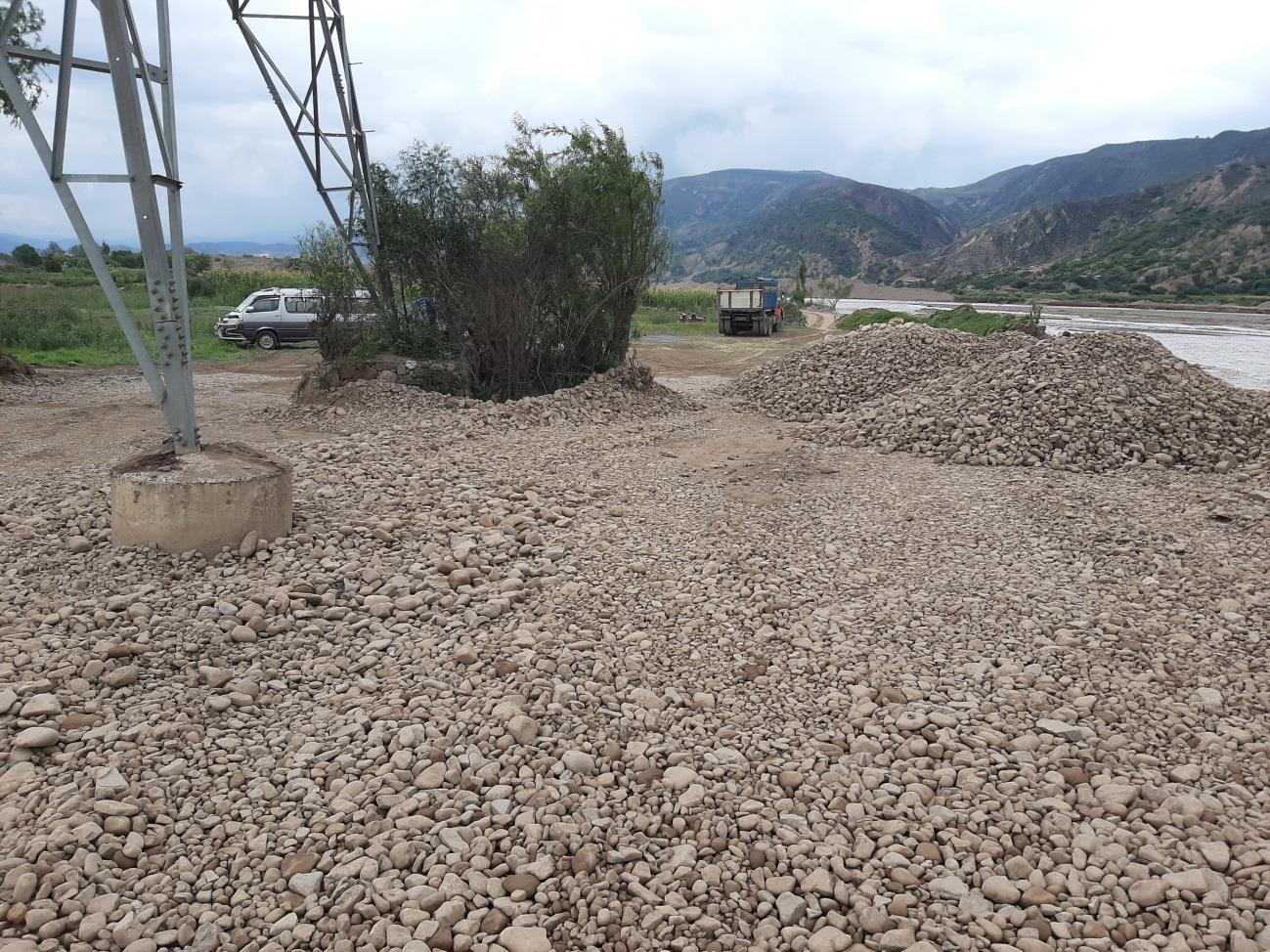
Recovery of the platform of the structure Foundation.
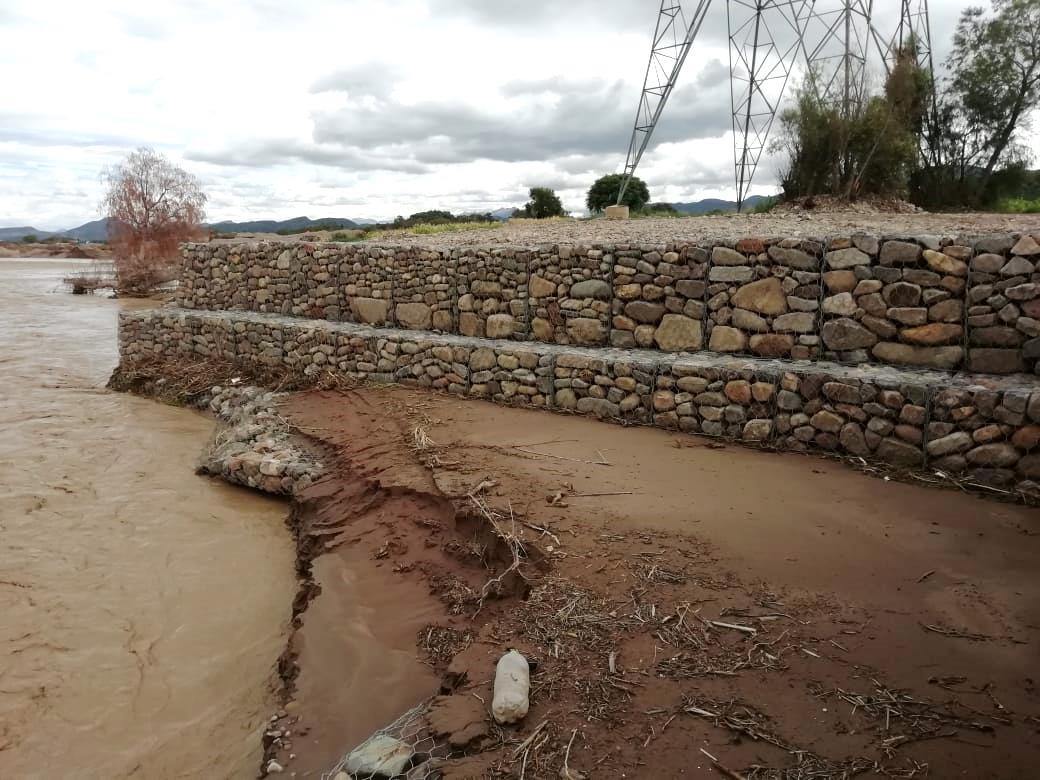
Construction of containment structures formed with gabions.
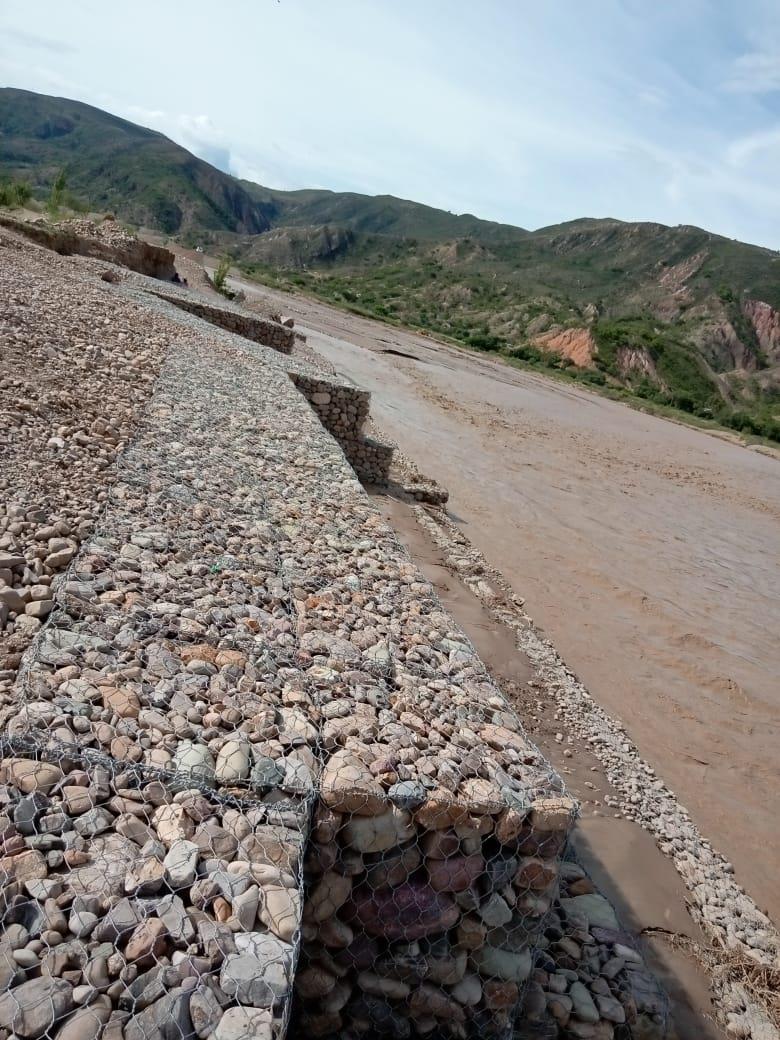
Containment structures made up of gabions.
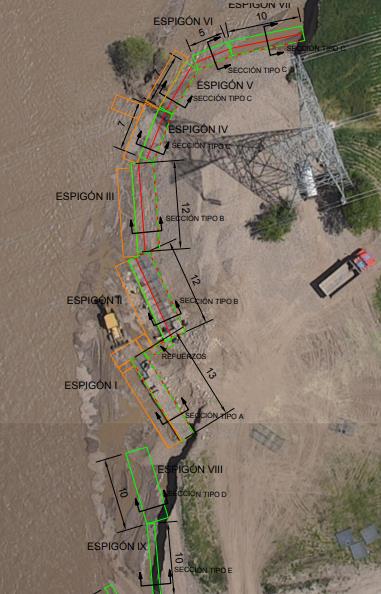
Scheme of implementation of retaining walls with gabions, for the protection of the Structure 25
Line maintenance staff carried out emergency work successfully, avoiding In this way the imminent collapse of structure 25 and consequent disconnection and output of Operation of the line, also avoiding the use of emergency towers and / or relocation of the structure that would involve the execution of line variant with a time not less than 4 weeks of implementation, social management and elevated economic expenses;guaranteeing the Reliability and stability of the national electric transmission network.
Download the original document at the following link. Descargar -
December 28, 2021

VARIABLE BYPASS REACTORS IN THE NEW 500 kV TRANSMISSION SYSTEM
Operation of electrical networks
The operation of electrical systems is subject to fluctuations in the consumption of electrical energy; Likewise, the incorporation of wind and solar renewable energy contributes to the variability of the operating conditions of the transmission network during the day and at night, weekdays and weekends.
Real-time generation must permanently adjust to these variations. The figure shows the generation curve of the SIN (National Interconnected System) which varies from 978.4 MW (01:00 hrs) to 1588.0 MW (19:30 hrs). Variations in electricity generation produce an imbalance in reactive power in the electricity transmission system, accompanied by changes in the voltage level.

The continuous growth of the consumption of electrical energy at the national level, has promoted the need to expand the electrical transmission system to a higher voltage level until now existing. This new voltage level of 500 kV, unprecedented in the Bolivian electricity grid, poses new challenges in the stages of development of studies, engineering, construction, commissioning and, later, in the commercial operation and maintenance of said facilities.
The challenge in the operation of electrical networks
The challenges in the operation of electrical networks at a global level, has motivated us to innovate in new equipment that contributes to voltage regulation. In order to provide reactive power flexibly, Variable Shunt Reactors (VSRs) are the preferred solution. VSRs combine conventional iron core reactors with the addition of tap changers that have been used in high voltage transformers for many years. With their regulating unit, VSRs provide variable reactive power and allow rapid adaptation of the grid voltage
The expansion of the electricity transmission system in the SIN
ENDE Transmisión as transmitting agent of the Wholesale Electricity Market (MEM) is executing the project “Transmission Line in 500 kV Santiváñez – Carrasco”. As part of the scope of the electrical installations of the project, inductive reactive power compensation reactors are installed linked to the transmission line through switches. The reactors have a nominal power of 35 MVAr at a voltage of 500 / √3 kV. At each end of the Santiváñez – Carrasco 500 kV transmission line, a bank of 3×35 MVAr single-phase reactors plus a reserve unit has been designed in order to control the voltages produced by the “Ferranti Effect”. Likewise, as supplementary voltage control elements in the transmission network, variable reactors with a total bank power of 63 to 105 MVAr are installed in the busbar system of the Santiváñez and Carrasco substations, composed of three 21+ single-phase units 17×0.824 MVAr. In the one-line diagram below you can see the location of the VSRs in the substations.

One-line diagram of the 500 kV network with variable reactors (VSR)
Diseño y modo de operación del VSR
Shunt variable reactors are designed with air-gapped iron core. The iron core conducts and concentrates the magnetic flux that needs to close the air gaps. The images show the photographs of the General Electric brand variable reactors that are installed in the busbar system of the 500 kV Santiváñez and Carrasco substations.


The difference in the permeability of electric steel and oil (oil permeability is equal to air or vacuum) is very large, it is enough to work with the magnetic resistance of air gaps. They reduce inductivity and increase the performance of this arrangement (figure left).
The VSR operating principle is based on the change of the number of turns in the winding. Therefore, the windings are equipped with tap changers, which connect and disconnect turns. Tap changers have been used for many years in power transformers for voltage regulation (right figure).
In the figure below you can see in a panoramic photograph the variable reactors of the Carrasco 500 kV substation.


Performance of the VSR in the electrical network of the SIN
The analysis of the operation of the VSR in the SIN electrical network has been carried out with DIgSILENT’s PowerFactory software, in which all the components of the transmission, generation and distribution system are modeled.
In the analysis, two events have been considered that demonstrate how the VSRs contribute substantially to the voltage control of the 500 kV system: 1) Disconnection of the 105 MVAr line reactor of the Santiváñez substation and 2) Increase in the load in the form of a ramp.
-
Disconnection of line reactors (105 MVAr) Santiváñez end
The figure shows in blue the voltage level reached without considering the VSR (fixed reactor) and in red the voltage level with the action of the VSR tap changer, the horizontal line in red represents the maximum voltage limit acceptable in normal operation 1.05 pu (525 kV).
As can be seen, the blue line is above the maximum voltage limit with 1,063 pu (542 kV), on the contrary, with the actuation of the tap changer the voltage is reduced to a value of 1,028 pu (514 kV).

-
Rampa de carga de 50 % en 50 seg
In this case, the demand in the Eastern zone increases by 50% in 50 seconds, which means an increase from 242 MW to 325 MW. The figure shows the voltage response in Santiváñez 500 kV busbars without the actuation of the variable reactors (blue) and with the actuation of the tap changers of the variable reactors (red). Finally, when the voltage seems to settle at a value at which the variable reactors of Carrasco and Brechas have reached the operating limit of their tap changers (0.984 pu); the order of disconnection of a bar reactor (63 MVAr) is given to obtain a voltage with a higher value.

-
Disconnection of line reactors (105 MVAr) Santiváñez end
-
October 28, 2021

In 2018, ENDE Transmisión S.A. decided to diversify its sources of financing, in order to face the increasingly demanding needs of having infrastructure for energy transportation in our country. In September of that year, the Extraordinary General Shareholders’ Meeting gave its approval for the Company to enter the Stock Market, through the issuance of debt bonds, launching the First Program of “ENDE Transmisión Bonds” for an amount approved by ASFI, of 2,080 million Bolivianos.
Once all the formalities and requirements demanded by ASFI and the Bolivian Stock Exchange have been fulfilled, at the end of 2019 two issues were placed, 1 and 2, in 2020 another four (3, 4, 5 and 6) and This year, recently, on September 30, 2021, two new issues, 7 and 8. The last two placements allow us to have Bs. 236 million to continue meeting the financial needs of the two 500 kV lines: Carrasco – Santivañez and Carrasco – Brechas, in addition to completing the new 230 kV transmission line from Santa Cruz to Trinidad.
Until the middle of next year, ENDE Transmisión expects to place about 85% of the amount approved by ASFI, thus ensuring, with this financing, the stability of the energy flow in the central axis of the country and the reinforcement of the energy flow with the capital. of the Beni.
-
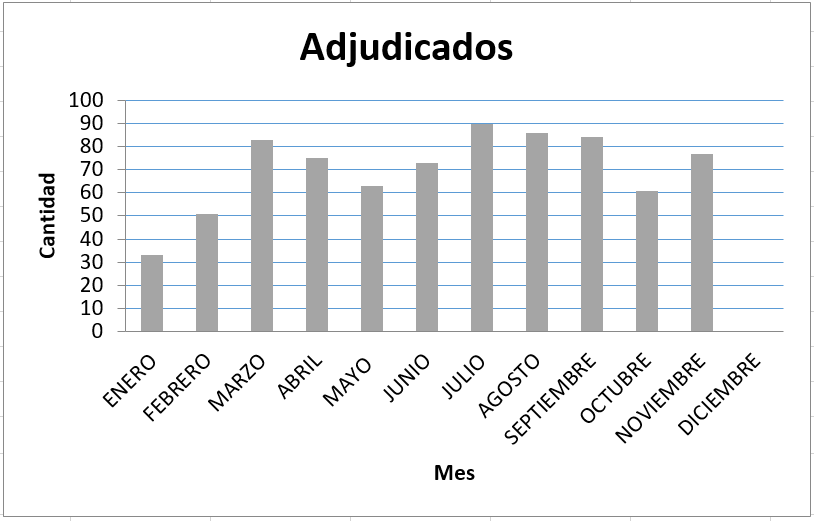
REPORT OF PROCESSES OF CONTRACTING AND ACQUISITION
(From January 01, 2021 to November 31, 2021)
ADJUDGMENT JANUARY 33 FEBRUARY 51 MARCH 83 APRIL 75 MAY 63 JUNE 73 JULY 90 AUGUST 86 SEPTEMBER 84 OCTOBER 61 NOVEMBER 77 DECEMBER 0 
-
October 20, 2021
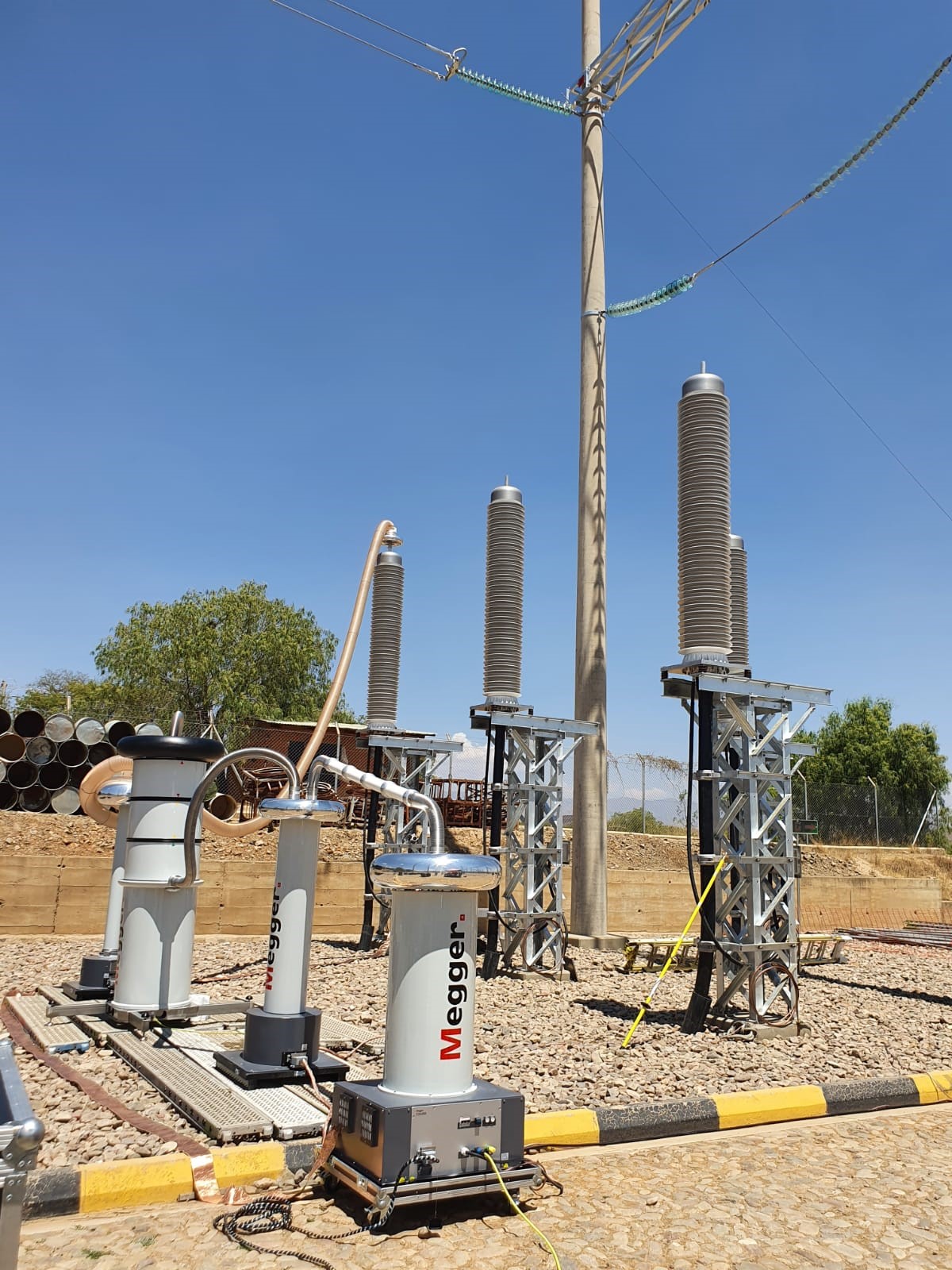
ENDE TRANSMISIÓN CONCLUDES INSTALLATION OF THE FIRST 230 kV UNDERGROUND ELECTRIC TRANSMISSION LINE IN THE COUNTRY.
ENDE Transmisión S.A., A subsidiary of ENDE Corporación, is currently executing the project “Transmission Line in 500 kV Carrasco – Santivañez and Associated Substations”, being the first electric transmission line in 500 kV in Bolivia, a historical milestone in the construction and subsequent maintenance of this type of high-voltage lines of great transport capacity, a work that positions the country at the level of the electricity sector of the neighboring countries of the American continent.
As part of the scope of this great project, there is the interconnection of the Santivañez and Santivañez II substations, in which two types of 230 kV power lines are managed; an overhead section of 360 meters and another underground section of 410 meters to the ISA substation.
The installation of this 230 kV underground line, which is used to allow the crossing (below) of 4 existing lines at the outlet of the Santivañez substation, is also the first of these characteristics in our country, which was built from the stage of civil works until conducting diagnostic tests of the cable for its subsequent commissioning.
It should be noted that this project is built with its own engineering and Bolivian labor, becoming a historic milestone for the country’s Electricity Sector.
EXCAVATION OF CABLE TRENCHES

 LAYING OF CABLE TUBES
LAYING OF CABLE TUBES
 UNDERGROUND CABLE LAYING
UNDERGROUND CABLE LAYING

 TERMINAL ASSEMBLY
TERMINAL ASSEMBLY


 DAC DIAGNOSTIC TESTS
DAC DIAGNOSTIC TESTS

-

PROJECTS REPORTED BY ENDE TRANSMISSION FOR MEDIUM-TERM PLANNING (NOVEMBER 2021 – OCTOBER 2025)
Within the functions of the National Committee for Cargo Dispatch (CNDC) is the programming of the operation of the Electric System maintaining the minimum performance level approved by the Electricity and Nuclear Energy Authority (AETN). It is the obligation of the transmission agents to inform the CNDC every six months of their maintenance requirements and the planned expansion of their facilities for the optimal operation of the Transmission System in the medium term.
In August 2021, ENDE Transmission S.A. declared the following transmission projects for the Medium Term Programming November 2021 – October 2025:
Project Length km Date of entry into operation Adaptation of 230 kV Warnes bars – Sep – 2021 Busbar Reactor Bank in Belgium (Yapacaní Substation Project) – Sep – 2021 115 kV Shunt Capacitor in Potosí (ECEBOL Potosí Plant Connection Project to SIN) – Sep – 2021 Santivañez substation expansion (Stage 1 of CAR-SAN 500kV) – Nov – 2021 230 kV Santa Cruz – Beni interconnection (Troncos-Guarayos-Paraíso-Trinidad) 400.16 Dec – 2021 Adaptation of the second triple Line Payer – Solar Oruro in 115 kV – Mar – 2022 Carrasco – Santivañez 500 kV 236.27 May – 2022 Tarija – Angostura – Bermejo 115 kV 188.85 May – 2022 STATCOM – Static Compensator in Paraíso (230 kV Santa Cruz – Beni Interconnection Project) – May – 2022 Carrasco – Gaps 500 kV 185 Mar – 2023 Umapalca – Palca 230 kV 87 Nov – 2023 Santivañez – Mizque – Sehuencas 230 kV 172.62 Jul – 2024 Mizque – Sucre II – Sucre 230 kV 185 Apr – 2024 Sucre II – Potosí II – Punutuma 230 kV 188 Apr – 2024
Proyect Longitude km Date of entry into operation Adaptation of 230 kV Warnes bars – Sep – 2021 Busbar Reactor Bank in Belgium (Yapacaní Substation Project) – Sep – 2021 Busbar Reactor Bank in Belgium (Yapacaní Substation Project) – Sep – 2021 115 kV Shunt Capacitor in Potosí (ECEBOL Potosí Plant Connection Project to SIN) – Sep – 2021 Santivañez substation expansion (Stage 1 of CAR-SAN 500kV) – Nov – 2021 230 kV Santa Cruz – Beni interconnection (Troncos-Guarayos-Paraíso-Trinidad) 400.16 Dic – 2021 Adaptation of the second triple Line Payer – Solar Oruro in 115 kV – Mar – 2022 Carrasco – Santivañez 500 kV 236.27 May – 2022 Tarija – Angostura – Bermejo 115 kV 188.85 May – 2022 STATCOM – Static Compensator in Paraíso (230 kV Santa Cruz – Beni Interconnection Project) – May – 2022 Carrasco – Brechas 500 kV 185 Mar – 2023 Umapalca – Palca 230 kV 87 Nov – 2023 Santivañez – Mizque – Sehuencas 230 kV 172.62 Jul – 2024 Mizque – Sucre II – Sucre 230 kV 185 Abr – 2024 Sucre II – Potosí II – Punutuma 230 kV 188 Abr – 2024 SUITABILITY OF BARS 230 KV WARNES
The objective of the project is to provide greater reliability and operational flexibility to the Warnes electric power injection and withdrawal node, by sectioning the bars and installing their respective sectioning bays and a bus coupling bay.
BANK OF BAR REACTORS IN BELGIUM (YAPACANÍ SUBSTATION PROJECT)
As part of the Yapacani 230 kV substation project, the need was identified to transfer the line reactors installed in the Carrasco Substation to the Belgium Substation, whose new location will facilitate the control of voltages in the eastern area of the Trunk Interconnection System (STI) .
115 KV SHUNT CAPACITOR IN POTOSÍ (ECEBOL POTOSÍ PLANT CONNECTION PROJECT TO SIN)
Due to the start-up of the ECEBOL Potosí cement plant, there are voltage drops in the project’s area of influence. Therefore, the 115 kV ECEBOL Potosí Connection to SIN project, in its stage 2, contemplates the installation of a 115 kV, 12 MVAr capacitor bank, in the Potosí Substation.
INTERCONNECTION 230 KV SANTA CRUZ – BENI (TRONCOS-GUARAYOS-PARAÍSO-TRINIDAD)
The main objective of the project is to improve the reliability and security of the electric power supply to the department of Beni, closing the electric ring in the North of the National Interconnected System, as well as the substitution of diesel generation in Trinidad and Guarayos, through the laying of the second three of the 230 kV Belgium-Troncos transmission line and the construction of the 230 kV Troncos-Guarayos-Paraíso-Trinidad transmission line. Likewise, it will create a new STI withdrawal point for the demand served by the distributor CRE in the town of Ascensión de Guarayos, currently constituted as an isolated system.
SUITABILITY OF THE SECOND TERNA PAYER LINE – SOLAR ORURO IN 115 KV
The objective of the project is to make the two stages of the 100 MW “Oruro Photovoltaic Solar Plant” more flexible to the Trunk Interconnection System (STI), by installing two 115 kV line bays at the ends of Pagador and Solar Oruro and the adaptation of the respective transmission line connections, making the operation of the second triple of the 115 kV Pagador – Solar Oruro transmission line independent.
500 kV CARRASCO-SANTIVAÑEZ TRANSMISSION LINE AND ASSOCIATED SUBSTATIONS
The Carrasco – Santivañez 500 kV line constitutes an energy corridor that provides greater reliability and flexibility, and allows better use of the generation of the system through the construction of the Carrasco 500/230 kV Substation, 500 kV Carrasco electric transmission line- Santivañez and 500/230 kV Santivañez Substation.
TARIJA – ANGOSTURA – BERMEJO 115 KV
The project allows the injection of the electrical energy generated by the La Ventolera wind farm into the Trunk Interconnection System (STI). Likewise, it enables the creation of a retirement node that reliably and safely supplies electricity to the population of Bermejo. In addition to displacing local generation based on thermoelectric units.
BAR REACTOR IN CUMBRE (UMAPALCA PROJECT – PALCA)
In order to better control reactive energy in the North Area, the 230 kV Umapalca – Palca Line project includes the installation of a three-phase reactor of variable power in 230 kV bars at the La Cumbre substation.
CARRASCO TRANSMISSION LINE – 500 KV GAPS AND ASSOCIATED SUBSTATIONS
This new electrical link will allow a greater flow of energy, will provide greater reliability and flexibility to the Santivañez – Carrasco – Las Brechas energy corridor at 500 kV. In addition, it will make it possible to take better advantage of the generation of the system avoiding transport restrictions and will facilitate international interconnection projects with Brazil and / or Argentina.
LINEA UMAPALCA – PALCA 230 KV
The objective of the project is to allow the injection of the electrical energy generated by the Miguillas hydroelectric plants (Palillada and Umapalca) to the National Interconnected System (SIN) at 230 kV. As part of the project, it also seeks to strengthen the Northern Area of the SIN, providing greater reliability, operational flexibility and improving voltage control.
SANTIVAÑEZ – MIZQUE – SEHUENCAS 230 KV
The Santivañez – Mizque – Sehuencas 230 kV line project will allow the injection of the energy generated by the Ivirizu hydroelectric plants (Sehuencas and Juntas) to the Trunk Interconnection System (STI). Subsequently, a 230 kV line to Sucre is planned from the Mizque substation.
MIZQUE – SUCRE II – SUCRE 230 KV
The implementation of the project “Transmission Line Mizque – Sucre II – Sucre in 230 kV”, is part of the reinforcement of the southern area of the National Interconnected System (SIN). The objective of the project is to enable the injection to the SIN of the energy generated by the Sehuencas and Juntas Hydroelectric Power Plants, to improve the quality of electricity supply to the city of Sucre and nearby towns. Likewise, a second 230 kV link is consolidated between the Central Area and the Eastern Area to improve the reliability, quality, flexibility and security of the electric power supply.
SUCRE II – POTOSÍ II – PUNUTUMA 230 KV
The project aims to improve the quality and reliability of the electric power supply between the cities of Sucre and Potosí and install a new electric power withdrawal node south of the city of Potosí, to meet the demand of the mining industry settled in this area. , through the construction of the 230/115 kV Potosí II electrical substation, the 230 kV Sucre – Potosí II – Punutuma electrical transmission line and the 115 kV Potosí II – Potosí electrical transmission line.
-
September 8, 2021

It is difficult to imagine living today without being connected to computer networks, email, distance education, the cloud, and in the electrical world, SCADA systems, local networks in substations, connections and management of equipment remotely, and a endless services that we use every day. However, the greater the diversification, the greater the security control over these must be. In the 1940s, to destroy a country’s economy it was necessary to have weapons and large amounts of money that could finance such an attack. Currently, with computer networks, which are accessible at very low costs, it is possible to economically destabilize a country by attacking its critical infrastructures. To fully understand what this implies, it is necessary to understand what a threat means, where it originates and what are the measures and / or recommendations to take.
Threats
A threat is understood as any risk factor likely to materialize to the detriment of a company, city or nation. Now, any computer threat embodied in the electricity system can have a great negative impact, compromising the electricity supply in Bolivia, and may even at some point be classified as terrorism or attacks on national security.

Attacks on critical infrastructures is not something new, among the most notorious cases are:
- Stuxnet: In 2010, a very sophisticated “computer worm” took control of 1000 machines that participated in the production of nuclear materials and whose objective was the self-destruction of the same. This virus was developed since 2005.
- Black Energy: This Trojan had its beginnings of development in 2007 and was improved until its attack on plants in Ukraine (Dec 2015), achieving a blackout. This attack was based on the Spear Phishing technique, which uses emails making their origin appear to be true, they include Excel and Word documents with macros in charge of infecting computers on the destination network.
- ndustroyer: (December – 2016), is a virus oriented exclusively to critical systems, it looks for known vulnerabilities in Siemens and GE equipment and is capable of controlling the switches of a substation directly.
- Brazil (April 29, 2020): The Energisa group suffers a hacker attack, the objective, to encrypt the servers, and request a “ransom” of R $ 5 million.
- United States (May 2021): The Colonial Pipeline company, one of the largest transporters of gasoline, diesel and fuel using a pipeline system, was forced to shut down its systems due to a cyberattack. The company paid $ 4 million as a ransom.
- United States (June 2021): The meat processing company JBS was forced to paralyze its operations in the United States and Australia as a result of a cyber attack (ransomware). The company paid $ 11 million as a ransom. The FBI considered this attack one of the most sophisticated.

Who are behind an attack
The idea that young and rebellious people are behind such a sophisticated attack as those mentioned is far from reality.
We find criminal companies, which are very well organized, hierarchical and have a classic internal structure, like that of any company.

They have many specialized engineers, in charge of carrying out very sophisticated attacks, they have large budgets, they plan and prepare their attack in several years and they are always in continuous learning, seeing new techniques and attack methodologies, looking for vulnerabilities to enter and carry out a massive contagion.
They are industries specialized by product and service lines, with specialties in:
- Malware (Malicious Software whose objective is to infiltrate the device without our knowledge)
- Intrusion, money laundering and mule networks, which consist of opening bank accounts using stolen identities, or offering “easy” money in exchange for allowing us to use our bank account and carry out transactions on our behalf. Santander Bank of Spain closes approximately 12,000 “mule accounts” per year
The objectives pursued by this type of company are mainly:
- Profit through information theft, hijacking, Ransomware and its demand for ransom
- Disruption of Services
- Fraud
- Attack critical infrastructures, seeking as much damage as possible

Action
We are faced with the so-called endless race of “the sword and the shield.” The attackers discover the sword and we discover the shield, they discover the gunpowder and we discover the bulletproof vest. The advancement of attack and defense techniques happens very quickly, vulnerabilities are discovered in a short time and it is for this reason that many systems are continually updated, contrary to what happens in electrical systems, due to the very particular behavior that have.
A substation equipment to be implemented to state subjected to a series of tests under a certain Hardware and Software that guarantee its operation. Updating these computers may result in previously tested software not working properly with new updates.
To think that with the purchase of some security devices we are safe is unreal, since there is no 100% secure system.
Security-conscious companies invest a lot of money in implementing mechanisms to protect themselves, and continuously train their staff in specialized security topics, since this area is very large.
The main objective is to protect the integrity and availability of systems and networks, hardware and software, data and information. This is achievable through procedures, products, and people.
Risk management seeks within these objectives the development of contingency plans based on a risk analysis either to cancel or mitigate the probability of success of a threat, and in the event that it occurs, control its impact.
The application of world-known safety models and guides helps in this end. One of them is defense in depth, which among its guidelines has:
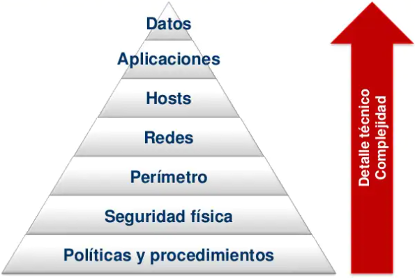
- Control of physical access to facilities
- Physical segmentation of the IT network and the OT network where equipment is installed
- Fraud
- Creation of DMZ (demilitarized) zones to isolate critical systems into protected segments
- Implement industrial firewalls by placing them at the perimeters of the IT network, substations and critical systems
- Secure remote access (VPN)
- Centralized administration and management
Strategic companies are the most vulnerable to cyber attacks, since due to the type of activity they carry out, they merit the implementation of a more specific cybersecurity scheme.
The incorporation of security policies must be part of the quality processes of the companies. As well as obtaining international certifications of cybersecurity infrastructure based on standards such as NERC-SIP, taking into account the IEC64351 recommendations and without leaving aside the formation of Security Operation Centers (SOC) that must be made up of interdisciplinary staff.
The awareness, socialization and continuous training of the personnel of the Bolivian electricity sector, on security policies and the proper use of the networks will help in this objective.
Current Ende Transmission Policy
Ende Transmisión, aware of these challenges, carries out through its qualified personnel the management, acquisition and implementation of state-of-the-art security equipment in order to reduce the possible risk of an attack that could compromise its facilities and its SCADA system.
He also actively participates in seminars and courses related to cybersecurity of critical systems to keep up-to-date on this topic.
It works together with the SIEMENS company (SCADA system provider) updating the base software (currently in the process of applying the version 3 update package) in order to achieve greater stability and security in your system.

-
July 17, 2021
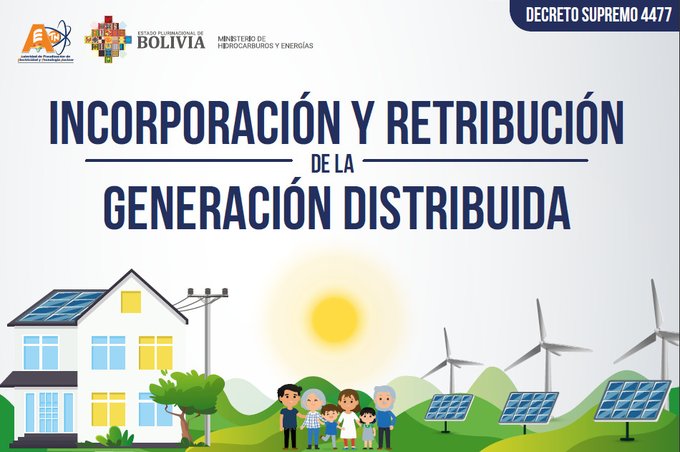
-
June 10, 2021

El Gobierno nacional tiene previsto destinar en la gestión 2021 un monto de 37,9 millones de dólares para retomar la construcción de la línea de transmisión Juana Azurduy de Padilla, que dará paso a la interconexión energética con Argentina y a la exportación de electricidad.
Expertos destacan la importancia de la interconexión, pero observan que, para exportar electricidad, aún se debe trabajar en la firma de un contrato con clientes del vecino país y en definir el precio del gas natural que se destinará a la generación de electricidad de exportación.
En marzo, durante la rendición pública de cuentas final 2020 del Ministerio de Hidrocarburos y Energías, Franklin Molina, titular de esta cartera de Estado, informó las negociaciones para concretar la integración energética con Argentina fueron paralizadas durante el gobierno de transición, por lo que la actual gestión encara un proceso de reactivación del proyecto.
La autoridad dijo que la línea de transmisión en el lado argentino tiene un avance del 70 por ciento, por lo que se presupuestó un monto actualizado de 37,9 millones de dólares para completar la obra que consta de 110 kilómetros, 40 en territorio boliviano y 70 en el lado argentino.
Durante mencionado acto, el presidente de la Empresa Nacional de Electricidad (ENDE Corporación), Marco Antonio Escobar, precisó que aún resta por construir 43 kilómetros de la línea de transmisión en territorio argentino.
Indicó también que se incrementaron los costos del proyecto ante la falta de acciones durante el gobierno transitorio, mismo que no logró concretar el financiamiento del saldo requerido para la conclusión de obras. No obstante, dijo que actualmente se sigue un plan de acción para reanudar las labores y concluir el proyecto en 2021.
Al respecto, el exgerente de Desarrollo Estratégico y Proyectos de ENDE Corporación José Padilla destaca la importancia del proyecto de integración energética con Argentina, pero menciona que, para exportar electricidad, es necesario firmar un contrato y asegurar que Yacimientos Petrolíferos Fiscales
Bolivianos (YPFB) defina el precio del gas que proveerá a ENDE para la generación de energía eléctrica destinada a la exportación.
Según el especialista, para invertir en la construcción de la línea de transmisión Juana Azurduy, primero se debió tener un contrato fijo, de modo que el retorno de la inversión esté asegurado.
Padilla mencionó que el norte argentino demanda mayor energía eléctrica solamente en época de invierno, pero cuenta con proveedores de Brasil, Chile y Uruguay, con los cuales tendría que competir Bolivia. Por ello, aseguró que es importante trabajar en un contrato fijo que no se limite a los tres meses que conforman el periodo de invierno, porque con ese tipo de acuerdo no sería viable la millonaria inversión que, a la fecha, llega a al menos 32 millones de dólares.
Por su parte, el analista en hidrocarburos y energías Álvaro Ríos destacó la importancia de que Bolivia esté interconectada con Argentina y con los demás países del Cono Sur, es decir, Brasil, Uruguay y Chile, por lo cual considera que la línea de transmisión debe ser concluida.
Según el especialista, al tener el proyecto terminado, se puede entrar en negociaciones en el mercado spot (interrumpible o temporal) para vender energía competitiva que permitan al país obtener ingresos económicos.
Sin embargo, recomendó no subsidiar el gas utilizado para la generación de la electricidad de exportación.
Experto sugiere aumentar reservas
Aunque Bolivia cuenta con una sobrecapacidad de generación de energía eléctrica, el analista José Padilla considera que es necesario incrementar las reservas de gas natural en caso de firmar un contrato de exportación de electricidad a largo plazo con Argentina.
El gas natural es utilizado como materia prima para la generación de electricidad. En la Termoeléctrica del Sur (Tarija) se generará la electricidad para exportar a Argentina.
Según el experto, las reservas de gas en Bolivia son cada vez más reducidas, por lo que urge encarar un plan de exploración.
Sin embargo, dijo que, en la actualidad, es posible firmar un contrato para la exportación de 120 megavatios (MW) de potencia a Argentina, pero solamente de manera temporal.



